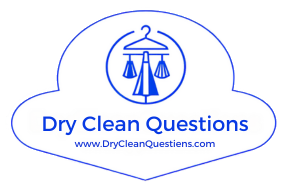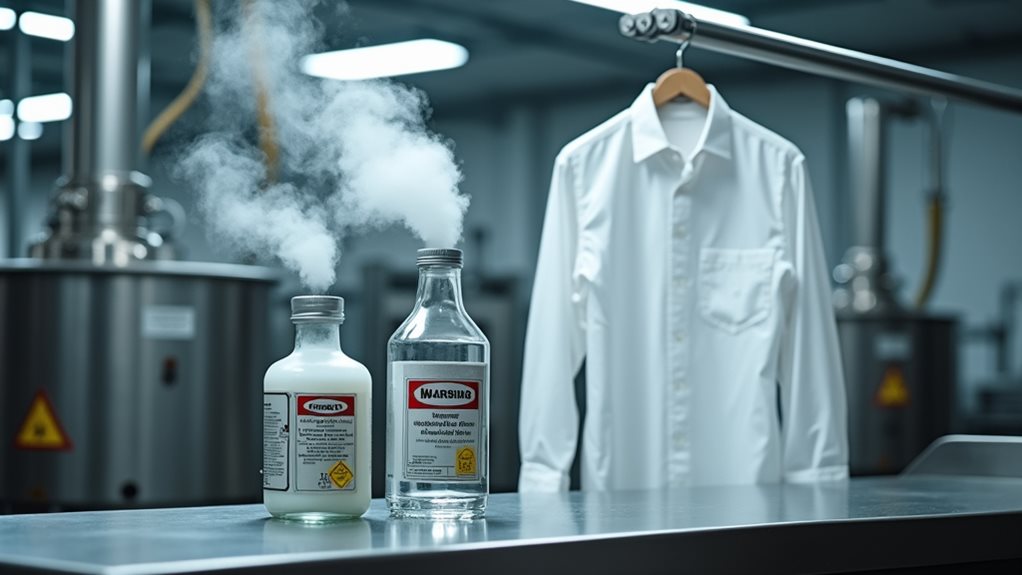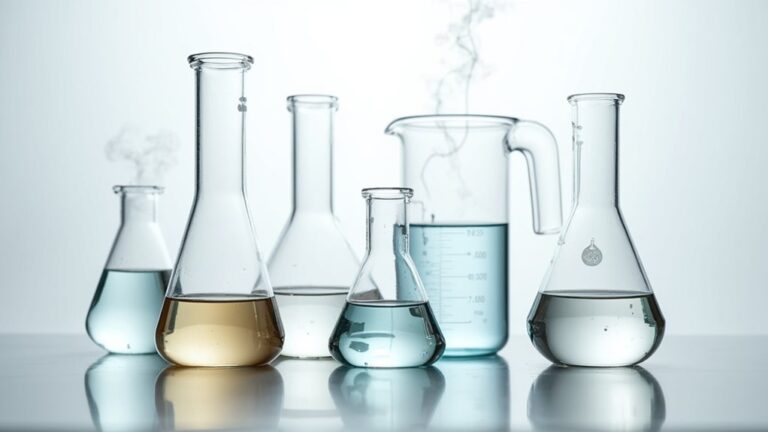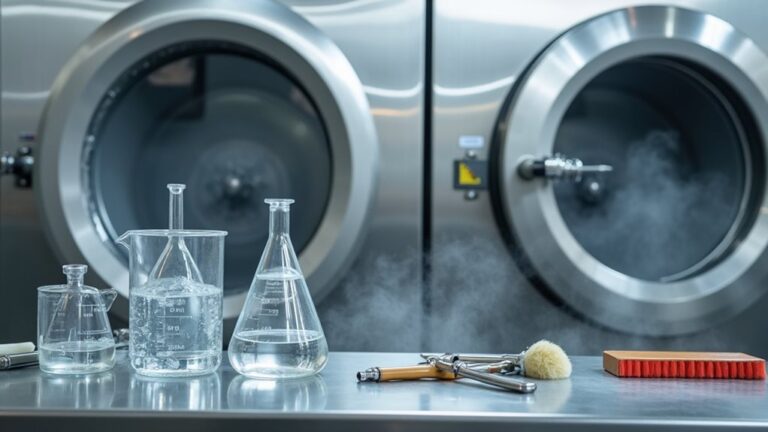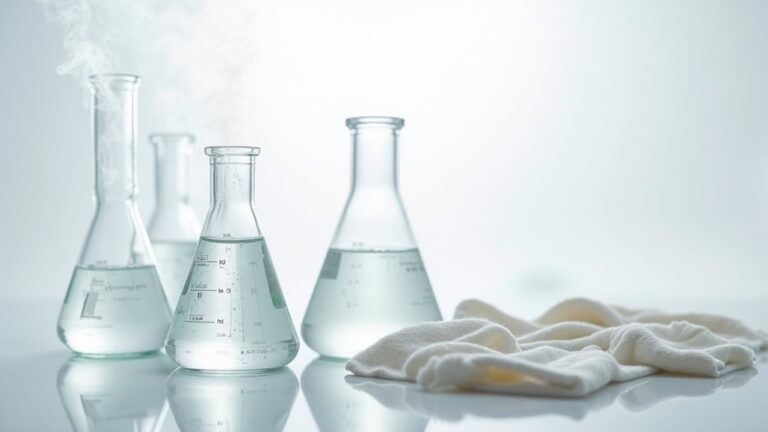Traditional dry cleaning can be dangerous because it typically uses perchloroethylene (PERC), a toxic chemical linked to cancer, liver damage, and neurological problems. You’re exposed when residual PERC remains on your freshly cleaned clothes, releasing harmful vapors into your home for weeks, especially with wool garments that trap these toxins. Workers face the highest risks from chronic exposure, but you can protect yourself by choosing eco-friendly alternatives like wet cleaning or liquid carbon dioxide methods, and always airing out garments outside before bringing them indoors—there’s so much more you can do to safeguard your family’s health.
The Hidden Health Risks of Traditional Dry Cleaning Chemicals
While most of us don’t think twice about dropping off our favorite blazer or delicate silk dress at the dry cleaner, there’s something unsettling lurking behind those pristine pressed garments that we really should talk about.
The toxic chemicals used in traditional dry cleaning, particularly perchloroethylene (PERC), pose serious health risks that extend far beyond what you’d expect. This common solvent has been linked to cancer, including bladder cancer and non-Hodgkin lymphoma, making it a genuine concern for both consumers and dry cleaning workers who face chronic exposure daily.
The environmental impact is equally troubling, as these solvents can contaminate air and water.
Even after cleaning is complete, PERC residues can remain on freshly dry cleaned garments, particularly when clothes are not properly aired out.
Thankfully, green dry cleaning alternatives are emerging, offering safer options for your wardrobe and peace of mind.
How Toxic Residues Remain on Your Clothing After Cleaning

Even after you pick up your freshly cleaned clothes and admire that crisp, professional finish, something unsettling continues to happen that most of us never consider – toxic chemical residues are literally clinging to the very fabrics we’re about to wear against our skin.
A Georgetown University study revealed that perchloroethylene concentrations actually increase with multiple dry cleaning services visits, creating a cumulative effect that’s frankly alarming.
These residual chemicals don’t just sit there harmlessly; they vaporize into your indoor air, turning your closet into a mini chemical factory 😬.
The health risks from inhalation become particularly concerning when you realize wool retains these toxic residues for weeks.
Wool fibers trap toxic dry cleaning chemicals for weeks, continuously releasing harmful vapors into your breathing space.
Beyond immediate exposure concerns, these persistent toxins can cause neurological problems, liver damage, and respiratory issues with continued contact.
Thankfully, alternatives to PERC exist, giving us hope for safer clothing care options.
Environmental Contamination From Dry Cleaning Solvents
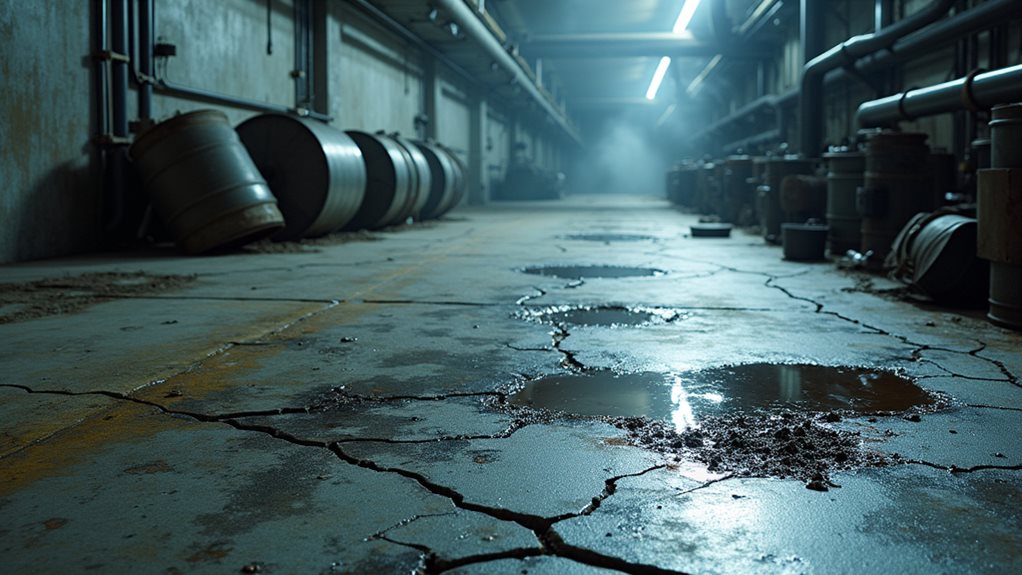
The contamination problem doesn’t stop at your closet door, unfortunately, because those same toxic chemicals are escaping into our shared environment in ways that should make every environmentally conscious person pause and reconsider their clothing care choices.
Perc and other dry cleaning solvents leak from facilities, creating environmental contamination that affects soil quality and water safety for entire communities.
These chemicals contribute to indoor air pollution when they escape ventilation systems, while toxic byproducts actually accelerate ozone layer depletion – talk about adding insult to injury! 😬
The ripple effects reach marine ecosystems and drinking water supplies, creating public health concerns that extend far beyond your freshly pressed suit, affecting generations of families who deserve cleaner alternatives.
When improperly disposed of, PERC can contaminate groundwater and soil, creating long-lasting environmental damage that persists in communities for years.
Safer Alternatives to Conventional Dry Cleaning Methods
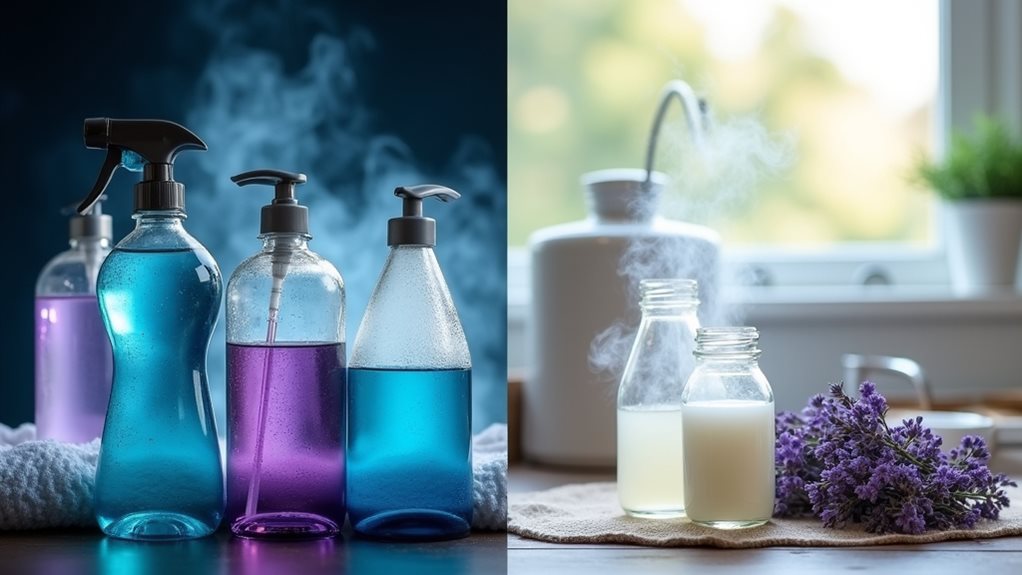
Fortunately, you don’t have to choose between looking professional and protecting your health, because innovative dry cleaning alternatives have emerged that’ll clean your clothes beautifully without exposing you to those nasty chemicals we just discussed.
Green dry cleaners are revolutionizing the dry cleaning industry with environmentally friendly methods like wet cleaning, which uses mild detergents and computer-controlled processes to safely clean delicate fabrics.
You’ll also find liquid silicone (D5) as a popular alternative solvent that’s non-toxic, biodegradable, and incredibly effective at removing stains without damaging colors or fabrics.
These safer options dramatically reduce chemical exposure and health effects from toxic substances, while liquid carbon dioxide offers another non-hazardous cleaning method that’s gaining traction among eco-conscious consumers seeking professional results.
Additionally, hydrocarbon-based cleaners serve as petroleum derivatives that offer a less toxic alternative to traditional solvents, though they may not clean as effectively as conventional methods.
Protecting Yourself and Your Family From Chemical Exposure
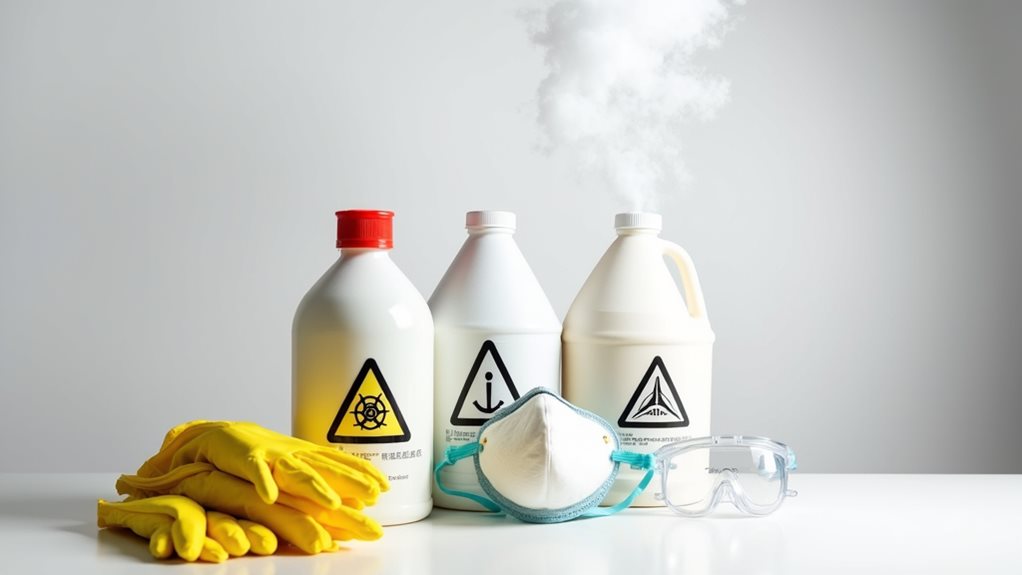
Why should you bear the burden of protecting your family from chemical exposure when simple precautions can dramatically reduce these health risks?
Start by asking your cleaners what dry cleaning solvent they use – if they mention perchloroethylene, that’s your cue to find alternatives.
I learned this lesson when my daughter developed headaches after wearing freshly dry-cleaned clothes; turns out, protecting family means being proactive about chemical exposure.
Choose cleaners that use eco-friendly methods like liquid carbon dioxide, which eliminates cancer risk associated with traditional solvents.
Always air dry your garments outside before bringing them indoors – this simple step removes residual chemicals that could affect your family’s health.
For normal consumer use, the actual health risk is generally considered low, especially when garments are properly aired out before wearing.
